Proper preparation and storage methods for onions at home
Onion belongs to perennial herbaceous plants, belongs to the onion family. Mainly used for food. The upper green feather part and the lower bulb are used. It is valuable for its medicinal and beneficial features... The composition includes minerals, vitamins and useful trace elements. The bulb can reach a diameter of 15 cm, it consists of numerous fleshy and juicy layers of white, greenish or purple.
Content:
- General information about bow
- Storage varieties
- Cultivation and collection rules
- Preparing onions for storage
- Storage rules
- Capacity and storage space
General information about bow
Onion used in many recipes. It is used both fresh and baked or boiled. Many summer residents grow a large amount of this vegetable in their plots, and in the autumn, the question arises about the place and method of storage.
Subject to all the rules and choosing the correct temperature regime, you can use your grown onions until mid-spring.
This significantly saves money, and also gives confidence in the quality and naturalness of the product. Process storage simple enough, you need a cool dry place and a convenient container with good ventilation.
Due to the high content of essential oils, sucrose, fructose, protein and polysaccharide, this vegetable is appreciated not only for culinary delights, but also as a medicine. It is recommended to use it during spring beriberi and colds. In addition, multilayer juicy flakes contain potassium, sodium phosphorus, magnesium, vitamins PP, C, E and many others.
Storage varieties
Not all varieties can be stored for a long time, and some are intended to be eaten within 1.5-2 months. Breeders have developed varieties that can be stored until mid-spring. There are also some that can be stored until February.
Long shelf life varieties:
- The Bessonovsky variety has small bulbs that ripen 3-6 in one nest. The shape of the bulb is round, flattened on top. The top layer is dry, yellowish-brown in color, easily separated from the main fruit. The juicy flakes have a rich, pungent taste. Matures onion of this variety within 3 months after planting.
- Arzamas variety. The bulbs are round, medium in size, but larger than the Bessonian variety. Ripen by autumn, after planting in about 4 months. Up to 3 bulbs are formed in the nest. The upper scales are dry and colored brown-orange. The inner layers are juicy, pungent in taste.
- Strigunov variety. The bulbs of this variety are oval in shape, the upper scales are yellow and well separated from the main fruit. The inner layers are juicy, fleshy and have medium pungency. The bulbs are large, in one nest there are no more than three pieces, one can weigh up to 200 grams. Ripen by autumn, if sown in spring the seeds, then the period increases by 1.5-2 weeks.
Average shelf life varieties:
- Danilovsky variety has large, flattened, round bulbs, slightly elongated from the side of the roots. The upper scales are purple-red and easily detach from the main fruit.The inner layers are colored white and purple and have a spicy sweet taste. This variety is often used in salads. One nest can contain up to 3 bulbs, the maximum weight of one does not exceed 200 grams. Ripens after planting for 3.5-4 months. The variety can be grown from seed, then the harvest takes place 2-3 weeks later.
Cultivation and collection rules
In order to onion lay long and well, you need to know some of the intricacies of making fertilizers and watering the plant. For example, if during the season nitrogen-containing feeding, the shelf life of the vegetable is reduced. The fruits begin to wither and rot faster. But when applying potassium fertilizer, the result will be the opposite and the medium-stored onion will lie for 2-3 weeks longer.
Late ripening watering removed. During this period, the onions should gain bitterness and dry out enough moisture so that early rot does not appear later. Also, gardeners recommend not planting plants in the same place every year, this significantly reduces yieldand can also cause diseases due to the accumulation of microorganisms of the same type in the soil.
When most of the upper feather leaves of the onion have already dried up and lay on the ground, it is time to harvest.
In different regions, this period falls on different months, from late June to mid-September. The top layer of each onion should be well dried, thin and brittle. If, when digging up the harvest, fruits with unripe scales are present, they are sent for additional drying and stored separately. They try to use such fruits in the first place, since there is a possibility of decay or fungal disease.
Preparing onions for storage
A sunny hot day is chosen for harvesting so that the first drying of the fruits can be carried out. For this:
- All bulbs are laid out in one layer on the site.
- During this drying, you can also peel the roots and upper feathers from the fruits.
- The upper part must be cut in such a way that 1.5-2 cm remains from the bulb.
- the nuts are removed completely, carefully so as not to hurt the fruit.
- The procedure is carried out with sharp scissors or a knife.
If cloudy or rainy weather is not expected, then the crop can be left in the fresh air for 4-5 days. At the same time, it must be turned over periodically.
Also at this time, fruits are sorted by size and quality.
Damaged bulbs are set aside separately for use first. In rainy weather, onions are dried indoors. It is necessary to prepare the conditions and space. The air temperature in the room should be in the range of 20-25 degrees Celsius, and it is also necessary to constantly ventilate the room.
Storage rules
Only well-ripened onions are sent for storage. This can be seen by several signs: the husk is thin and brittle, mainly bulbs with a yellow and brown-orange color of the top layer are suitable for long-term storage. Also, the lower part should not give new roots, if sprouts are found, the fruits are sent for additional drying or for use. The top must also be dry.
A good onion is placed in a container and lowered into the basement or placed in another cool place. In this case, for each individual variety, it is necessary to select its own box.
The optimum storage temperature is below 5 degrees Celsius.
But you cannot freeze this vegetable, since after thawing it will quickly deteriorate. So the lowest temperature level is 0 degrees. The room where onions are stored must be dry, moisture can cause various fungal diseases. If you have a cool pantry, this is the perfect place for this vegetable. Gardeners recommend not to store potatoes, carrot and other vegetables in the same room as onions.
Capacity and storage space
It is recommended to store onions in natural containers with good ventilation:
- Wicker baskets work well for this. They are usually made from natural materials and are breathable.
- Plastic or wooden crates that have holes in them will also work.
- Deaf plastic for this case will not work, the fruits may begin to rot.
- If a cardboard box is used, then it is necessary to independently punch holes in it for ventilation.
- In the old days, bows were kept suspended in tights, in this case they had good ventilation and a permanent dry space. Many gardeners use this method today. Such decorations can be safely stored in the pantry or in the kitchen, if you come up with decorative knitting.
- Bags can be used, but they contain a small amount Lukeso that it is not compressed under the weight. There are also mesh bags, they are well suited for storing large quantities of fruits.
All containers must be well dried and cleaned. Any residual organic products can cause damage to the bulb, which will entail all harvest in a container.
For every gardener, keeping your crop is just as important as growing it.
In addition to freezing, preserving and pickling, you can keep fresh vegetables... By following easy rules and placing onion, potatoes, carrots, beets and other vegetables in special places and containers, you can use your harvest until spring.
More information can be found in the video.



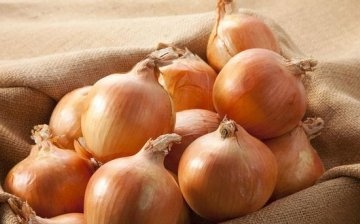

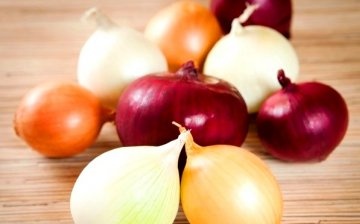
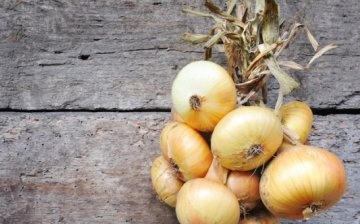
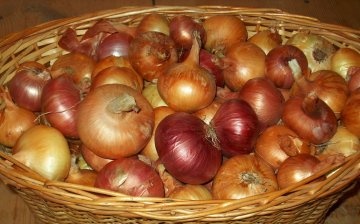









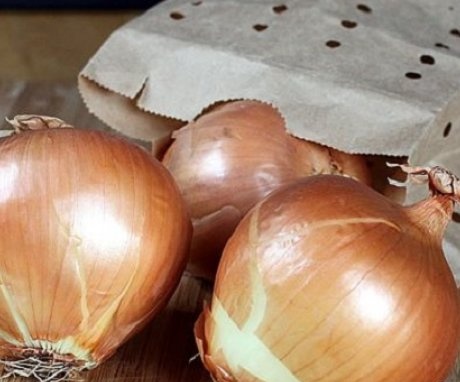

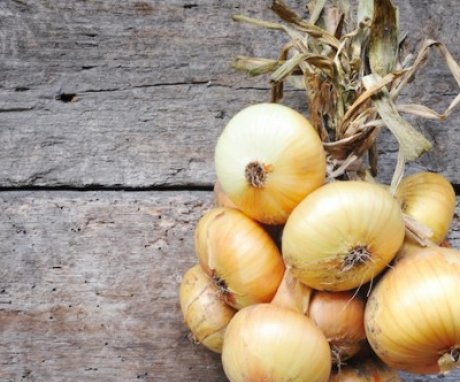
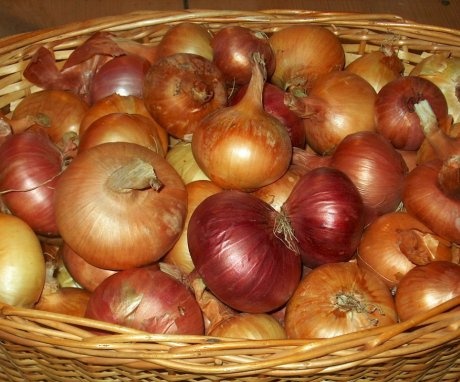
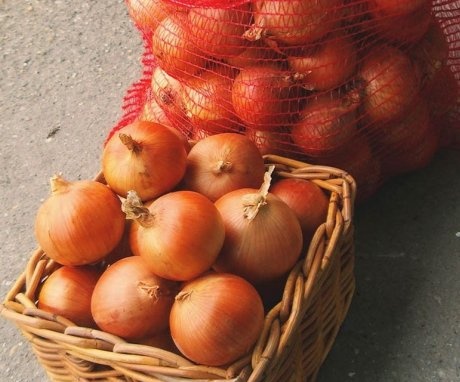
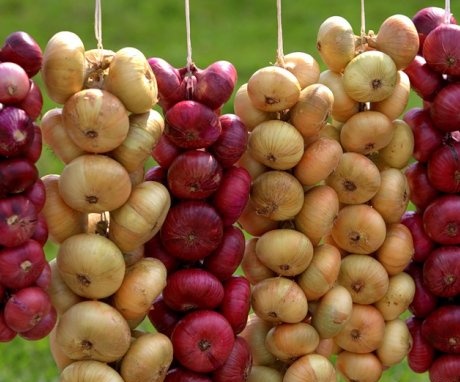
I always kept onions after harvesting in wooden boxes. I am often told that this is not the right thing to keep in bags, in newspapers and many other options. Tell me who keeps onions how? And is there a fundamental difference in storage methods?
Before storing onions, dry them well. You can store in boxes, or bags, bags cannot be tied, otherwise moisture will accumulate inside the bag.
Before storing the onion, it must be dried very well. You can store these vegetables in boxes or bags, the bags cannot be tied, otherwise moisture will accumulate inside the bag.